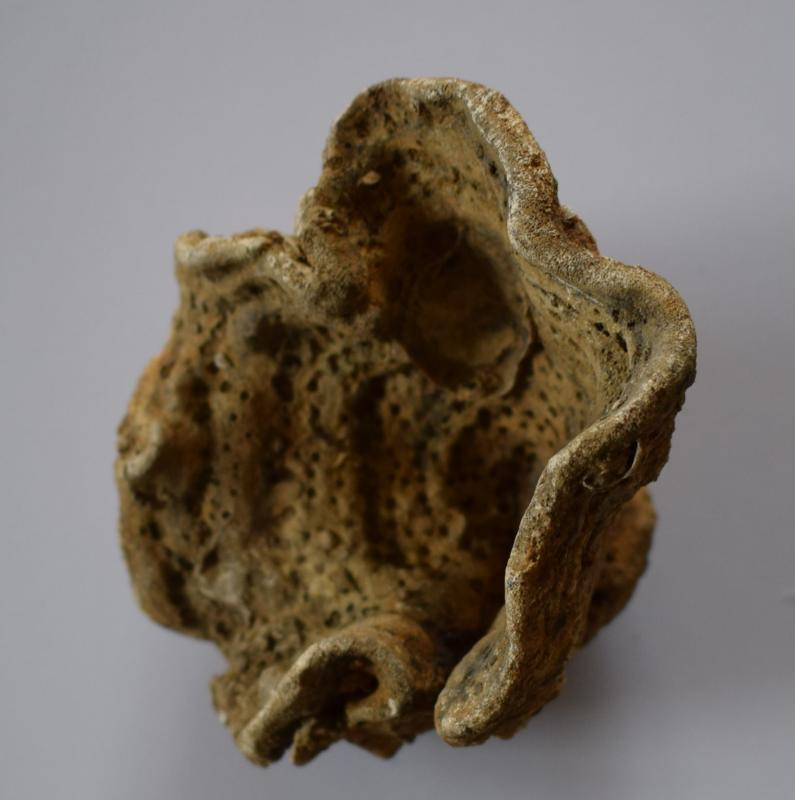Fossil Sponge

What is it?
A fossilised sponge from the Cretaceous period, c. 115 million years old. It came from a geological layer called Lower Greensand and was found in the Faringdon area. Faringdon is famous for the many Cretaceous sponges found there. This species even has Faringdon in its name: Raphidonema faringdonense. The sponges from millions of years ago are no different to the sponges living in the sea today. In fact, sponges are some of the oldest animals to evolve on Earth. They come in different shapes and sizes, often resembling tubes, vases or cups. They are anchored to the sea floor and filter food particles out of the water. We know that the Abingdon area was under water for most of the Jurassic period, which came before the Cretaceous. In the Late Jurassic the waters receded, but they came back in the Cretaceous, making this place an environment in which sponges could thrive.




Where is it?

You can find it at Abingdon County Hall Museum
Fossil display in the Attic Galleries, top floor
When can I see it?
You can see this right now!
Can I collect it?
This item can't be collected at the moment but check back in the future!

